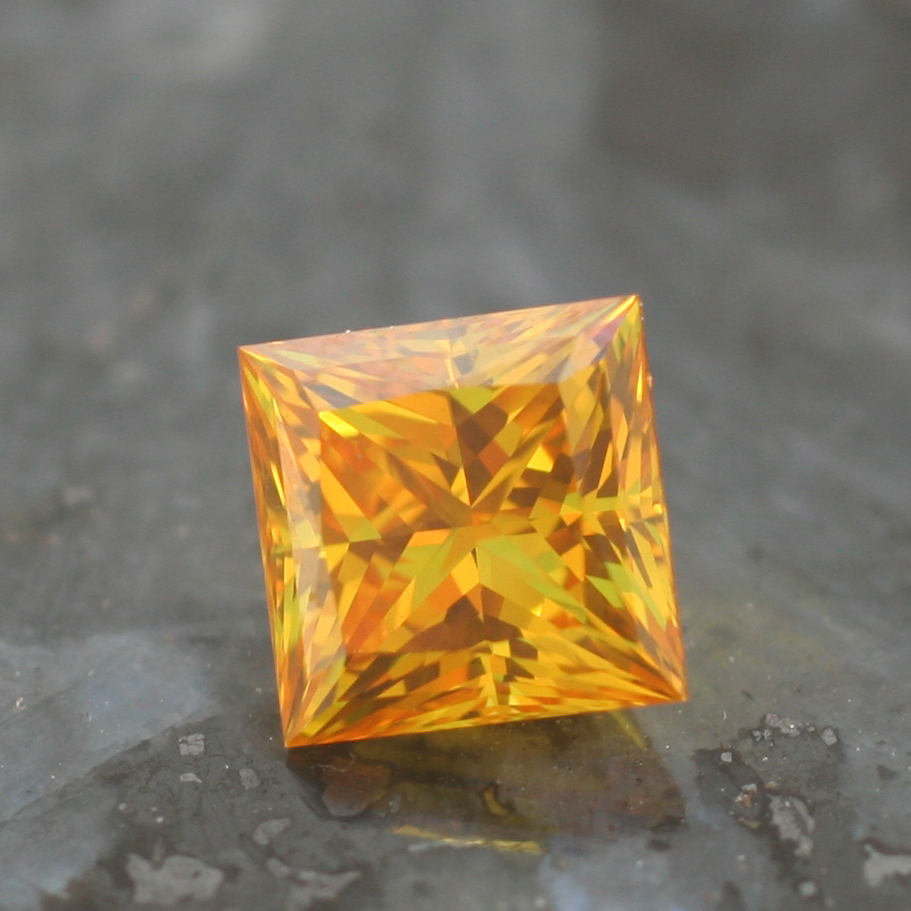Four year-old Rusty VandenBiesen was alone with the pictures of Jesus in the scary room at his grandmother’s when he burst into tears. His older brothers were watching TV and rushed in to see what was wrong. “He said he was afraid of dying,” said his brother Dean.

Life Gem is an Illinois-based company that transforms cremated human remains into gem-quality diamonds. The inspiration for the company came from co-founder Rusty VandenBiesen, who began worrying about death at age four. “His way of resolving this was to come up with an idea,” said Dean. That idea was diamonds. (Photo Courtesy of Life Gem)
It was a fear that remained with Rusty. Even into his twenties, he would wake up in the middle of the night in a panic. He wasn’t so much afraid of death but that after he died, he would be forgotten. “His way of resolving this was to come up with an idea,” said Dean. That idea was diamonds.
Rusty researched chemistry, Dean obtained a degree in geology, and the brothers teamed up with an entrepreneurial friend named Greg Herro. The plan was to transform cremated human remains into gem-quality diamonds. The group obtained a U.S. patent for the process of extracting carbon from cremated remains, and in 2002, they launched Life Gem. It took almost three months for the first orders to come through. “We were very nervous,” said Dean.
Since then, Life Gem has been featured on “Countdown with Keith Olbermann”, National Public Radio, and “The Tonight Show with Jay Leno.” The company has offices in England and Japan, where the cremation rate is over 98 percent. They fill about 1,000 orders a year, most for diamonds that end up on a ring or in a pendant.
“Our clients are often approached by strangers, maybe in line at a grocery store,” said Dean. “People will say, ‘That’s a beautiful ring.’”
The process of crafting a Life Gem diamond takes six to nine months and involves a variety of complex machines. About 250 to 400 grams of cremated remains are used, or roughly eight shot glasses worth. The ashes are sealed in a container and put it into a vacuum induction furnace, which is an oxygen-less oven about the size of two washing machines. The furnace has heavy-duty steel forgings and can reach temperatures of 3,000 degrees Fahrenheit. After cooking, what’s left is two grams or less of pure crystallized carbon, called graphite.
This is sifted to get a uniform particle size then placed into a ceramic cube with precision components. The cube is put into a diamond press, which also uses tremendous heat and pressure and transforms the graphite into a rough diamond. The piece is cut, polished, laser engraved with a tiny identification tag and set into a ring or pendent or delivered straight to the client.
Cremation rates rose from 6 percent in 1975 to 32 percent in 2005 and the Cremation Association of North America has projected that rates will rise to 43 percent by the year 2025. This should bode well for Life Gem, but still, the company recognizes that people who are not cremated may want to be turned into diamonds too. For them, Life Gem has developed a process to extract carbon from hair and turn it into diamonds. Typically, people who choose a full body burial are more traditional than those that choose cremation, explained Dean, but now they will at least have the option of becoming a diamond.
One of Life Gem’s newest subjects is about as untraditional as you can get, Michael Jackson. “After he died, we thought it might be interesting if we could find a lock of his hair and create diamonds from that,” said Dean.
They turned to John Reznikoff, a known Hollywood hair collector, who was able to secure a lock of Jackson’s hair that had caught fire in a freak accident during the filming of a 1984 Pepsi commercial. Apparently, a cunning producer scooped up some charred curls and kept them as a keepsake. For a price that Dean says was “in the high five figures,” Life Gem obtained the sample and will soon begin the lengthy process of transforming it into a diamond.










Maureen McHale
There are other companies that make these diamonds as well – some of which offer greater value. And, why wait until someone has passed away? Wouldn’t it be cool to have a diamond made for a bride’s engagement ring (with the groom and brides hair) or for a mother when her baby is born (and has hair!) and then pass them on?